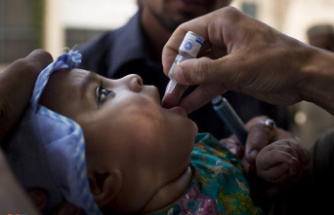NASA launched two small satellites on Monday, May 8, which should make it possible to observe the evolution of hurricanes hour by hour. Rocket Lab's Electron rocket, which belongs to the microlauncher category and is only 18 meters high, took off at 1 p.m. local time (01 GMT) from Mahia in northern New Zealand, according to the aerospace company, with the two satellites on board. These, Cubesats, weigh only about five kilos and will evolve at an altitude of some 550 kilometers.
A second rocket is to be launched in approximately two weeks, again by Rocket Lab, which will carry two other satellites to complete this small constellation. This will then have the capacity to pass every hour above hurricanes (or typhoons on the Pacific), against every six hours currently. The mission was named Tropics.
These satellites will allow scientists to no longer "just see what is happening at a given moment [...] but to really see how things are changing hour by hour", explained during a press conference Will McCarty, scientist at The NASA. "We will always need the big satellites," he added. But what we can take from this mission is additional information to that of the flagship satellites that we already have. »
This information collected on precipitation, temperature and humidity can help improve weather forecasts, in particular where the hurricane will make landfall and at what intensity, and thus better prepare for possible evacuations of the populations living on the ribs. "Many organizations, such as the US National Hurricane Center and the Joint Typhoon Warning Center, are ready to receive our images, to help them keep their meteorologists informed," said Ben Kim, also a NASA official.
In the longer term, better understanding the formation and evolution of these storms will improve climate models. The constellation was originally supposed to have six satellites instead of four, but the first two were lost when a rocket from the American company Astra malfunctioned shortly after takeoff last year.
As the surface of the oceans warms, hurricanes (or typhoons) become more powerful, scientists say. Hurricane Ian that devastated Florida in 2022 claimed dozens of lives and alone caused more than $100 billion in damage, by far the costliest weather disaster in the world last year.












